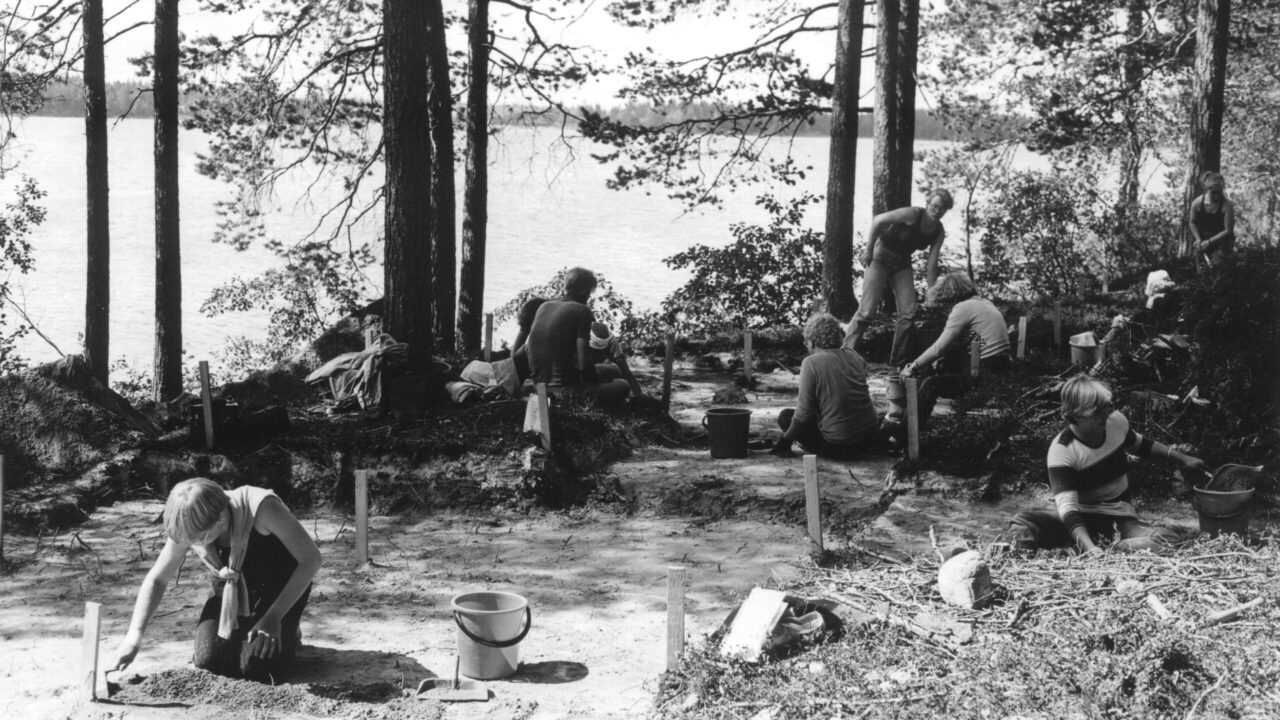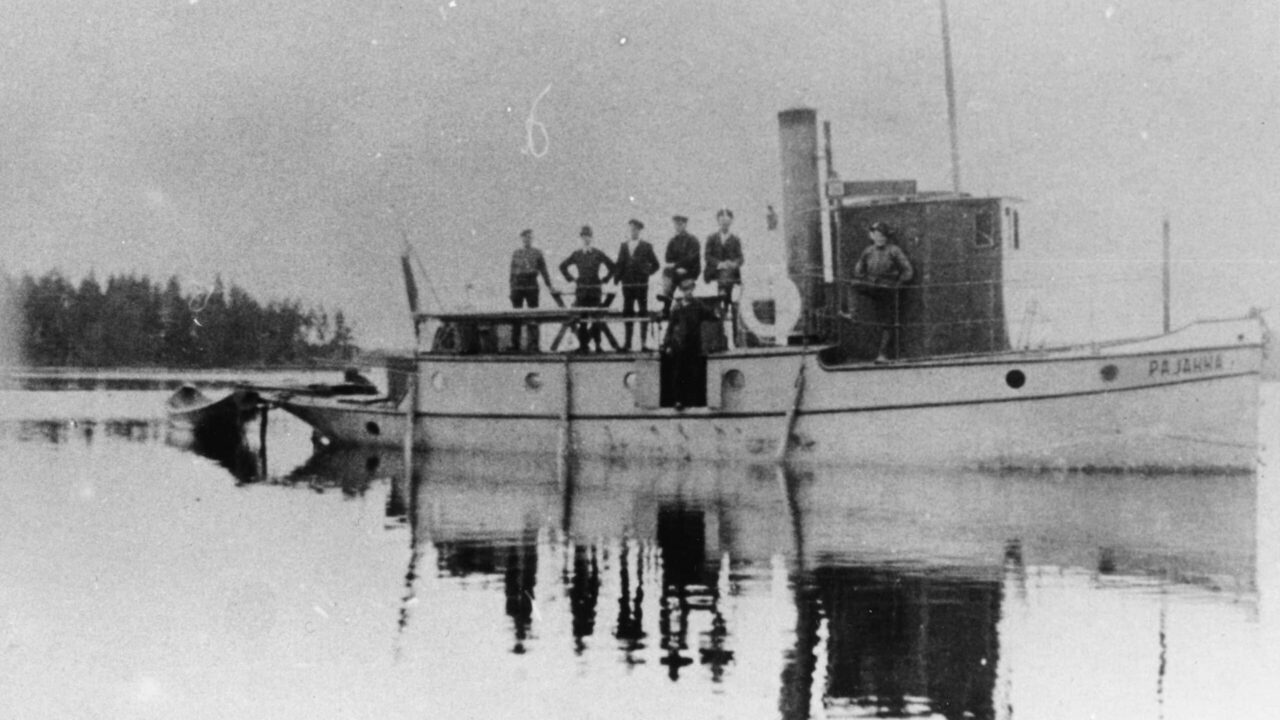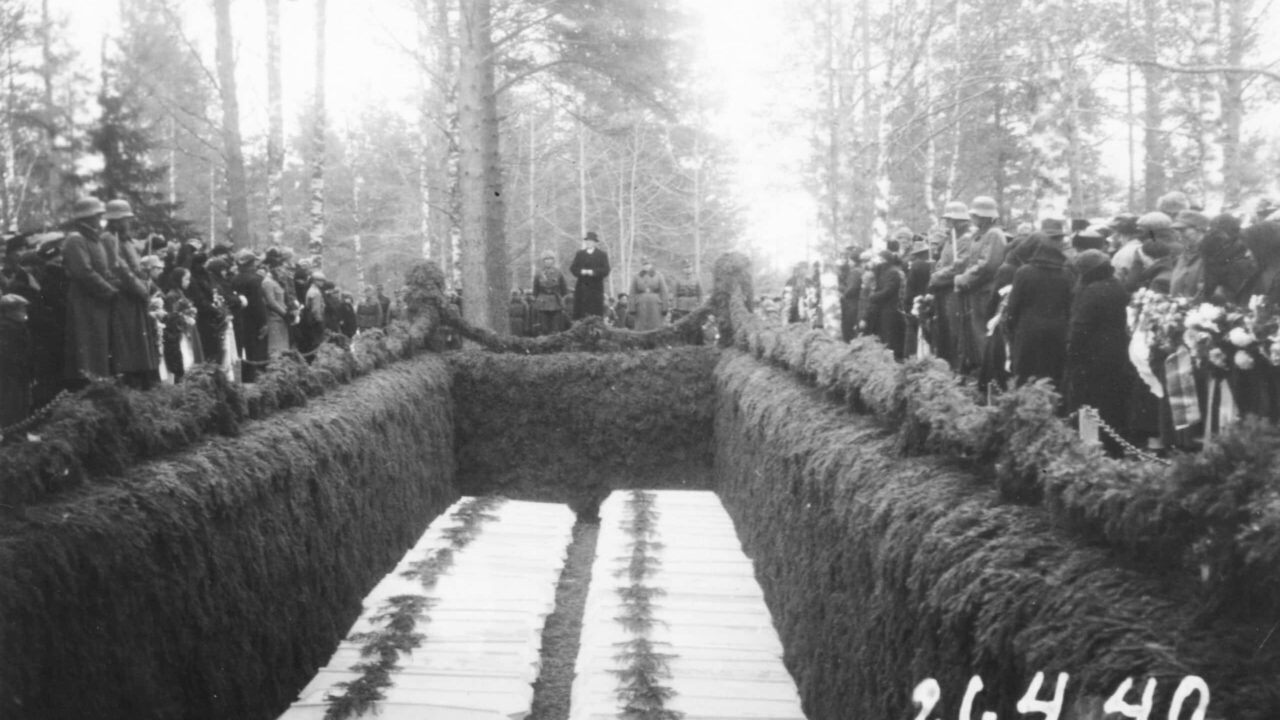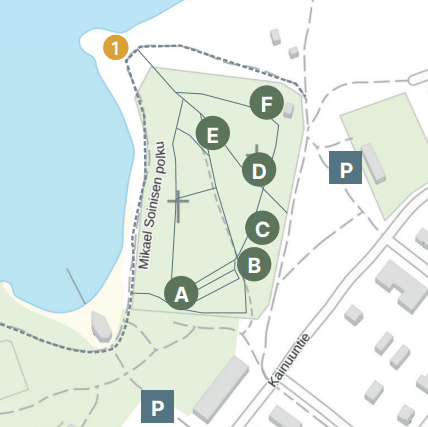
1. Hankaniemi
The body of water opening in front of the Hankaniemi Cape is a confluence of several waterways. Archaeological excavations carried out in the 1980s revealed that the area has been inhabited since the Stone and Metal Ages. On the opposite shore of Hankaniemi, at Sylväjänniemi, there is a prehistoric residential site from the Stone and Early Metal Ages. In the Koposensaari Island, located between Sylväjänniemi and Hankaniemi, there is a prehistoric residential site and a cemetery from the historical period. Also, another island in the middle of the lake, the Pitkäsaari Island, has been inhabited since the Stone Age.

The Koposensaari Island has earlier been connected to Hankaniemi, but apparently a severe flood opened a strait that separated the island from the mainland. The strait was dredged in the early 1920s for the operation of the tugboat S/S Pajakka. This steamship, owned by the Oulujoki Log Floating Association, transported timber on Lake Lammasjärvi from 1924 until the 1960s.
On the other side of the lake is the largest industrial plant in Kuhmo, the sawmill of Kuhmo Oy (Kuhmo Ltd.), founded in 1955.

The Hankaniemi cemetery was taken into use in 1816 along with the completion of the present-day church in Markkulanniemi. Since 1929, when the new cemetery in Leväkangas was taken into use, fewer burials have been made in the Hankaniemi cemetery.
Hankaniemi is also the site for 280 soldier’s graves of the Winter and Continuation Wars. One of the memorial services for the fallen in the Winter War was held at the Hankaniemi cemetery on April 21, 1940. At that time, the centre of Kuhmo was declared a war zone, and a special permit was required for all attendees of the funeral. A memorial cross for the war heroes was erected in May 1950.

A. Memorial for the War Heroes (1950)
B. Memorial for “Great Hunger Years 1866–1868” (Jarmo Aalto, 1991)
C. Grave of crown tenant farmer Renne Haverinen (Matokankaan Renne, 1850–1898)
D. Memorial for the Kuhmo residents who perished in the war of 1918 (2008)
E. Memorial for those who perished in the Lentua boat accident of 1877 (2003)
F. Memorial for Viena Karelians (1976)